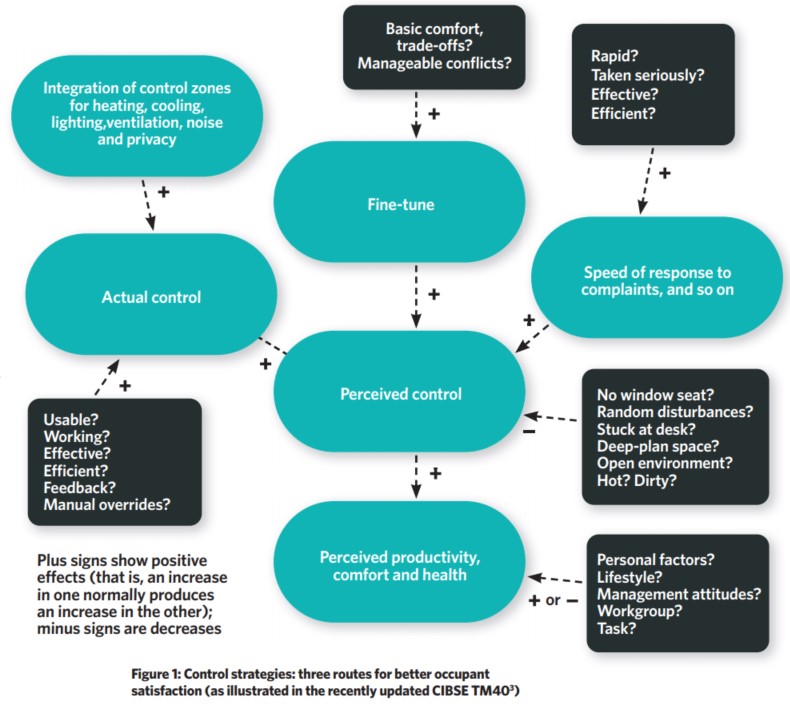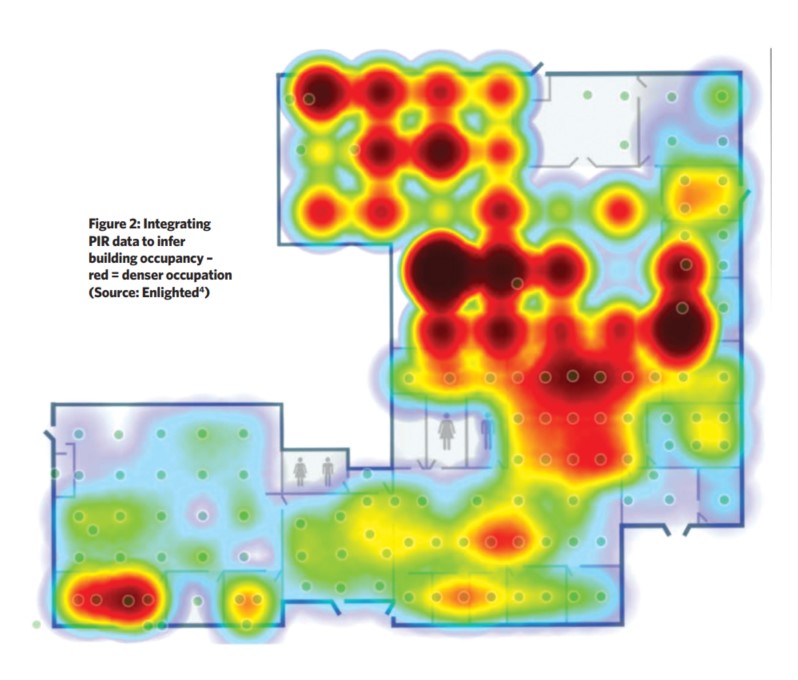
As the demand on building lighting systems to perform effectively and cost-efficiently has become more intense, so has the need for control solutions that allow building operators and end users to readily maximise the potential of their systems. Alongside this, the digitalisation of buildings, and the associated industries, continues to move forward. The recent explosion in remote working, learning and social networking has accelerated buildings towards a digital age, where flexible operation is becoming increasingly important as occupants expect improved agility in the control of their spaces. Progressively, technology is catching up with user demands.
In recent times, the attention of the wider lighting community has shifted – or, more correctly, broadened. While there is still a focus on energy efficiency, system longevity and ease of installation, the advent of LED lighting has, in many cases, already made this more achievable. Alongside this, however, there is a rising demand for, and increasing focus on, control, flexibility and connectivity.
The aspirations to better meet the needs of occupants are not new – they were evaluated by Bordass and Leaman1 more than 20 years ago, as shown in Figure 1. But there are now increased opportunities to fulfil these desires because, in the intervening years, the capabilities of the enabling technologies have developed.
The end goal, and the overall objective, remains to: enhance occupant health, wellbeing and productivity; minimise environmental impact; minimise operational and total life costs; and collect and intelligently process system performance data. As explained in CIBSE TM40: ‘The lighting design should also incorporate a level of user control in order to increase satisfaction and comfort, and to respond to different visual performance needs and glare control if tasks vary.’
As discussed in CIBSE Journal CPD module 147 (June 2019), the visual environment can significantly impact the health and comfort of building occupants. As staff are by far the largest cost in offices – typically 85% to 90% in the UK and US (as reported in TM40) – a small improvement in staff productivity can result in large improvements in profit margins. However, CIBSE Society of Light and Lighting (SLL) LG142 notes that a well-informed and interested user group is necessary to ensure that the control system performs at its best, with less chance of compromise to its operation in subsequent months or years. User expectations can often be influenced by poor communication during the design process, and the lighting-control designer should seek to engage with the user group as early as possible to establish an understanding of their needs. Unrealistic expectations on the part of the user can develop so that the system is left unused or bypassed, resulting in issues such as a lack of flexibility (in terms of comfort control) or a reduction in efficiency (in terms of energy control).
Until relatively recently, the multiplicity of wired network standards meant that connecting even medium-sized lighting installations to control systems could be an expensive and time-consuming task. Traditionally, luminaires have been linked through wired networks that are connected to each fitting to achieve overall control. While the benefits of such networks – often controlled using the digital addressable lighting interface (DALI) protocol – can be considerable, they can also lead to significant additional cabling requirements, with the attendant cost implications. Extensive cabled networks can also be challenging to amend when luminaires fail or need to be updated. This position has recently changed with the advent of the standard DALI wireless protocol (see ‘DALI’ panel). Lighting networks that use wireless DALI connections enjoy the same benefits as a typical DALI system, but without the set-up and maintenance of large-scale wired solutions. In a wireless system, integrated wireless nodes are housed within the luminaire and communicate with each other, eradicating the need for a physically connected network with its associated cabling requirements.

Inevitably, safety and security are priority concerns with all building systems, and lighting control is no exception. As highlighted in CIBSE’s recent cyber security publication, CIBSE DE6.1: Cyber security in building services design, when considering the security of such systems, a traditional wired system with tamper-evident protection is generally preferable to the use of wireless connectivity. Wireless is inherently less secure; a malicious – or simply inadvertent – interruption, or interception, of network traffic can take place in the vicinity of a system, and standard encryption protocols may be insufficient to prevent such an attack. The majority of the recently developed wireless lighting-control systems occupy a frequency outside of the spectrum occupied by Wi-Fi or Bluetooth systems (typically 868MHz). This makes them less susceptible to disruption, allowing the wireless network to operate in a more secure and reliable way, which is a particular requirement if there are multiple remote sites. It is prudent to assess the risks and evaluate opportunities, as deemed necessary for the particular application, for enhanced security, system redundancy and provision for fallback in case of failure.
With the extra cabling needs removed, networks can be scaled up with minimum disruption, while additional spaces or even separate buildings can be brought under the control of the same system. For designers and consultants, this means that lighting installations are not rigidly fixed at the time of commissioning. Instead, they can be adjusted as the occupancy and usage patterns of individual spaces or entire buildings develop.
The simplified scalability of the wireless system makes it practical for operators to control entire estates, and even manage multiple sites. In conjunction with building management software, this allows luminaires to be assessed for repair or maintenance without the need to be on site to check for fittings that are in need of repair.
The lighting-control system allows building operators to make system-wide assessments of, and changes to, the lighting function. Luminaires can be managed on an individual or group basis, depending on the requirements. This enables the simple, but functionally important, parameters for each fixture to be amended quickly and easily. The nodes can be readily addressed with an app or online portal, and entire systems can be monitored, controlled and managed remotely, with nodes passing the commands between each other.
Sensors can be applied to groups or to individual fittings, with the settings for these sensors altered and adjusted depending on the needs of the facility. This also allows maximum outputs to be set for luminaires and illumination for spaces to be reset with reference to outdoor conditions, or time of day, so as to keep lighting levels and energy costs under control. A room can be programmed to have several different ‘scenes’, each equipped with different lighting levels and colour temperatures that can be selected manually using wired or wireless wall plates, or via apps. The SLL LG14 highlights the opportunities afforded by ‘scene setting’ that allows the user to recall different lighting scenes, which may also incorporate a manual dimming override and automated/manual operation of associated window blinds. These employ components including integrated passive infrared (PIR) sensors and sensors for daylight harvesting systems, with each node communicating with the managing control system.
Live reports of the status of luminaires, sensors and emergency systems can keep building operators informed of potential interventions and changes that may be required in the lighting system. The building management software can highlight which fittings are in need of repair, so they can be dealt with to minimise consequent problems. This can be particularly useful, for example, in retail environments and spaces that rely on the ‘visitor experience’, helping to understand which luminaires may be approaching the need for maintenance so that they can be attended to effectively at the most convenient – and least disruptive – time.
‘Intelligent’ environmental monitoring and control – informed from the output of PIR sensors that are connected to, or integrated into, luminaires – can provide the information to create real-time, detailed occupancy maps. In the building illustrated in Figure 2, the areas highlighted in red have more PIR sensors activated than those areas in green, indicating that these zones are more occupied. This is crucial data for those in retail or warehouse environments, but this can be easily applied to a wide variety of applications. So, for example, the system can mesh its data with that from the building management system, the conference-room scheduling system, ambient daylight and the weather, to manage light levels. It can also pair room occupancy with HVAC data, so the building knows which rooms to heat and cool.2

Another advantage of the more recent lighting-control systems is that they often support scheduled emergency lighting self-testing. This can reduce ongoing interventions and costs – for example, the current market price for monthly mandatory emergency lighting tests is £200 (for up to 30 lights) when conducted manually. Manual tests also require recording and logging of all results, to be presented to the relevant authority upon request. Traditional self-test systems do support automatic testing, which already reduces the costs of manual tests and automatically logs the data. However, these legacy networks typically conduct such tests at random times. The nature of such tests – replicating a loss of mains power to assess the reliability of the emergency lighting – meant that their random occurrence could disrupt day-to-day activities. Wireless communication built into emergency lighting luminaires can also simplify adaptation of installations to new fire-safety requirements and reorganised building layouts.

The integration of wireless devices into the lighting systems can provide key advantages over traditional DALI systems and deliver enhanced lighting control, data collection and building management, scalability, and more effective emergency lighting. Such ‘smart’ lighting is not exclusive to new construction – there is good opportunity for the new generation of lighting to be applied to the existing building stock. The replacement of an existing system with a wireless network requires the installation of new luminaires with an integral ‘smart’ node. The small wireless DALI nodes ensure that the new fitting is physically no more difficult to install than an existing luminaire.
As building operators work to recover from the effects of the current global health and economic crises, the attraction of working from home has never been greater. As part of the required catalogue of adaptations – many of which can be seen in the CIBSE guidance at www.cibse.org/coronavirus-covid-19/emerging-from-lockdown – the decision-makers will be seeking ways to make their buildings a more appealing place to visit, work or learn in, and the adoption of smart lighting systems can provide an achievable route to enrich the occupant experience. Although it may be impossible to replicate the flexibility and control of the home environment, smart lighting systems can empower occupants with enhanced levels of control over their immediate environment that would, previously, have been practically unattainable, while ensuring that the building systems operate efficiently.
© Tim Dwyer, 2020.
■ See page 54 of CIBSE Journal, October, 2020 for further reading and references.
DALI
Digital addressable lighting interface (DALI) systems protocol can be used to broadcast – typically to groups of luminaires in zones – to activate and maintain on/off, scene setting and dimming control.
DALI-addressable systems, which are able to communicate with individual devices and luminaires, provide additional functionality, such as lamp-status feedback, lamp colour temperature shift, and automatic test and monitoring of emergency lighting. Each field device and luminaire has an individual address for control and identification purposes.
The recently updated DALI standard IEC 62386-104:2019 specifies the use of DALI with wireless instead of a wired bus system. (The underlying transport protocol differs from the conventional wired DALI bus system that is described in part 101 of the standard.)
Further reading:
(All freely downloadable from cibse.org for CIBSE members)
CIBSE DE6.1 (2019) – Cyber security in building services design is a unique document that covers an increasingly important area.
CIBSE TM40 (2020) – Health and wellbeing in building services is an excellent document providing up-to-date guidance.
These three publications from the CIBSE Society of Light and Lighting provide key design advice for lighting system design: SLL Lighting Handbook (2018); SLL LG 14: Control of electric lighting (2016); and LG7: Lighting Guide – Offices (SLL, 2015a).
References:
1 Leaman, A and Bordass, W, Strategies for better occupant satisfaction, 5th Indoor Air Quality Conference, London 1997 –
2 Society of Light and Lighting LG14 Control of electric lighting, CIBSE 2016.
3 CIBSE TM40 Health and wellbeing in building services, CIBSE 2020.
4 In LEDs, some see an intelligence to rival smartphones – 9 September 2020.
